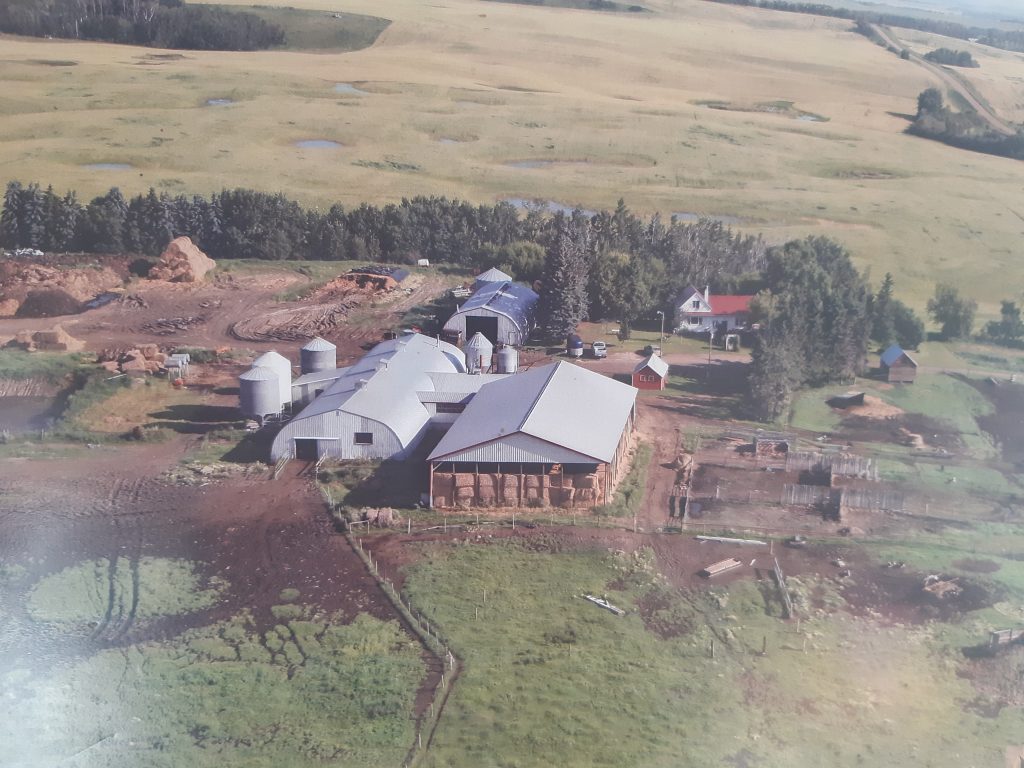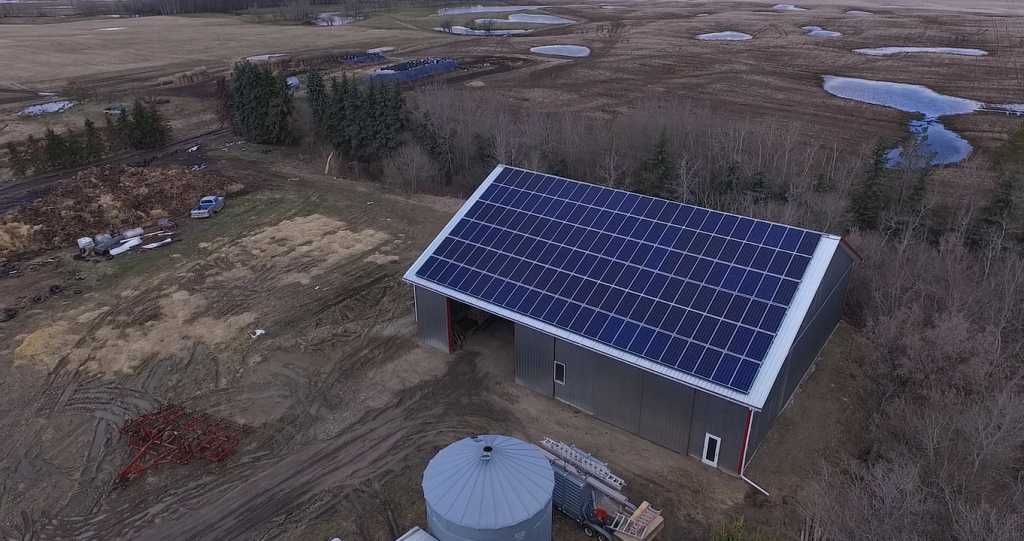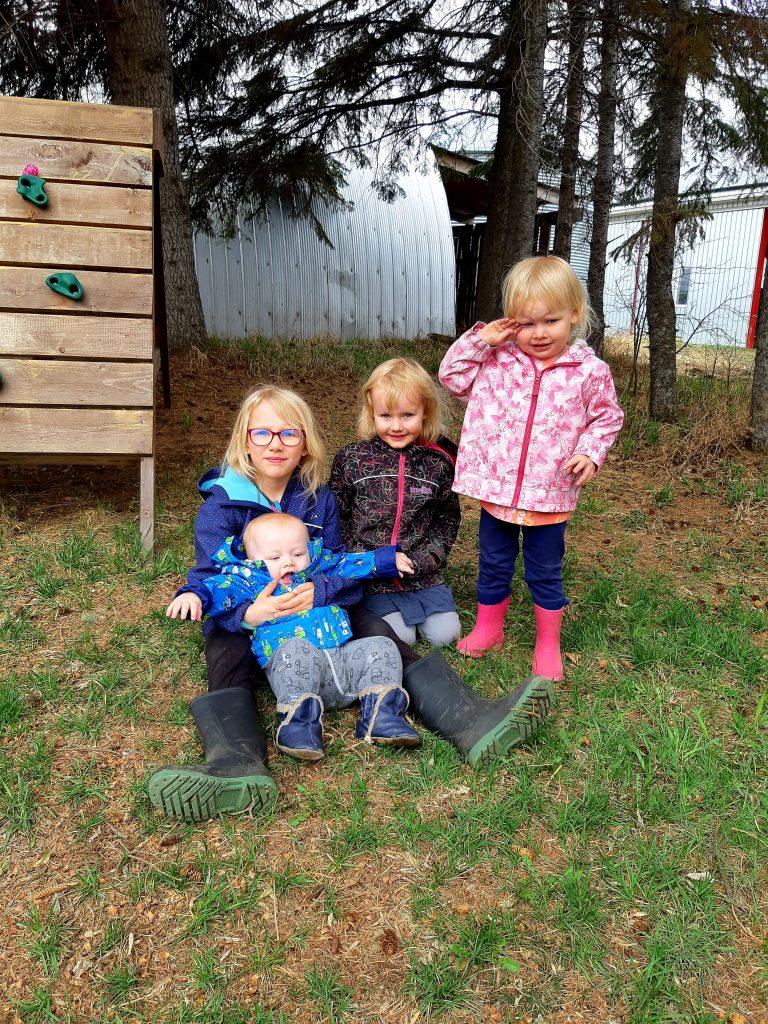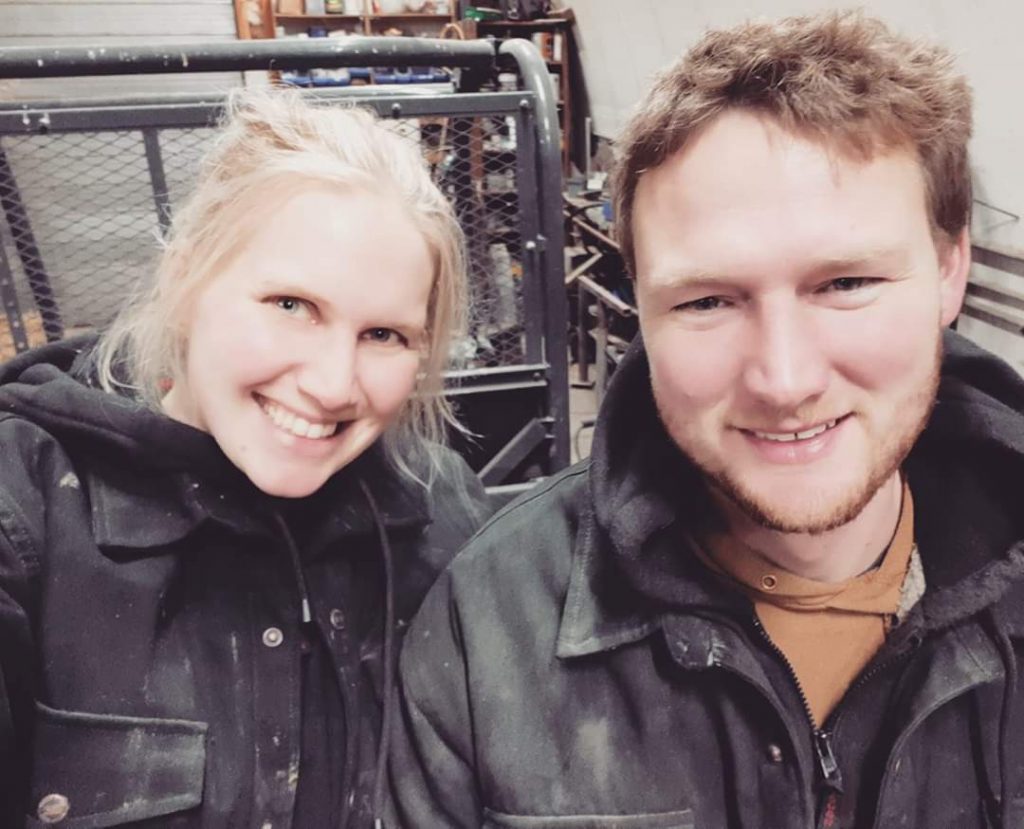
By Courtney van Assem
My in-laws began Vaudet Dairy in Limoges, France in 1985. Their dream of expanding the dairy farm inspired them to move to Canada. In 1996, they came to Ferintosh, Alberta to make that dream a reality.
After graduating from the Livestock Production course at Lakeland College, my husband, Thomas, came home to work on his family’s farm full-time. When we began dating 10 years ago, Thomas was already in discussion with his parents about taking over the farm, and it wasn’t long till we began to take on the adventure together.
On average, we milk 90 cows with around 150 young stock, in addition to raising a small beef herd. We harvest four quarter-sections of land for feed. Thomas and I have four young children – who are ever so eager to help, but aren’t quite old enough to do so. Balancing family and farm can sometimes be problematic. With no hired hands to help out on the farm, we balance the everyday work between ourselves and Thomas’s dad – and his mom helps out with the kids when life gets hectic.
Since taking over the farm, we have made some upgrades and improvements in order to maximize efficiency and ease of operation. But year after year, the bills keep increasing, parts and materials are more expensive, and farmers are forced to do more with less. One cost we can’t avoid is the power it takes to run the dairy barn. Twice a day, when we start up the vacuum pump, the electricity draw is high and at a peak time. It is a necessary element to our operation, so trying to offset that expense is always in the back of our minds.
 When the Growing Forward 2 (GF2) program came out in 2013, we started looking into what things they would approve for funding, to see if we could make any improvements to the farm. One of the key themes of GF2 was to ‘be proactive, increase productivity and advance sustainability.’ With fluctuating electricity rates and a deep concern for what the future prices would become, we did some research and turned our eye to solar panels.
When the Growing Forward 2 (GF2) program came out in 2013, we started looking into what things they would approve for funding, to see if we could make any improvements to the farm. One of the key themes of GF2 was to ‘be proactive, increase productivity and advance sustainability.’ With fluctuating electricity rates and a deep concern for what the future prices would become, we did some research and turned our eye to solar panels.
In 2016, a plan was already in place to build a machine shed, so we designed it to support solar panels. For maximum efficiency year-round, the roof was engineered with a south facing 6/12 pitch, 80 feet long. Within this space, we fit 144 solar panels, which generate 59,000 Kwh/year. GF2 ended up covering around 30 percent of the cost. Since our power draw at milking is very high, we also have to be tied into the grid. We have a microgen licence, which allows delivery to the grid up to the same amount as what we draw from it over a 12-month period, for the same price rate.
 Over the past three years, the solar power system has been great. So far, we haven’t encountered any major issues with the system, or operations. Local power outages still affect us, as we’re not completely isolated from the grid, but it hasn’t been a big issue. As far as cost savings go, it is a long-term vision! With the financing needed to cover what GF2 didn’t, whatever we save on electricity monthly is spent on the finance payments. We currently have six years left of financing before we see a positive change in cash flow.
Over the past three years, the solar power system has been great. So far, we haven’t encountered any major issues with the system, or operations. Local power outages still affect us, as we’re not completely isolated from the grid, but it hasn’t been a big issue. As far as cost savings go, it is a long-term vision! With the financing needed to cover what GF2 didn’t, whatever we save on electricity monthly is spent on the finance payments. We currently have six years left of financing before we see a positive change in cash flow.
These days, I believe that farmers need to plan with a more long-term sustainability plan, rather than just an economic one. Farmers need to look to what we can do to keep running and growing in the future, instead of focusing on what will put a dollar in our pockets today. It can be a hard way to plan, and not all decisions need to be made in this way, but to remain doing what we love – farming – will take patience and long-term sustainability planning.

Vaudet Dairy, COurtney
Vaudet Dairy is a family owned farm in Ferintosh Alberta. Thomas and Courtney van Assem and Siem and Adrie van Assem run the farm alongside Thomas and Courtney’s four children, Olivia, Rylee, Scarlett, and Korbin. They currently have 90 milking cows, a small beef herd, and harvest four quarter sections of land.
